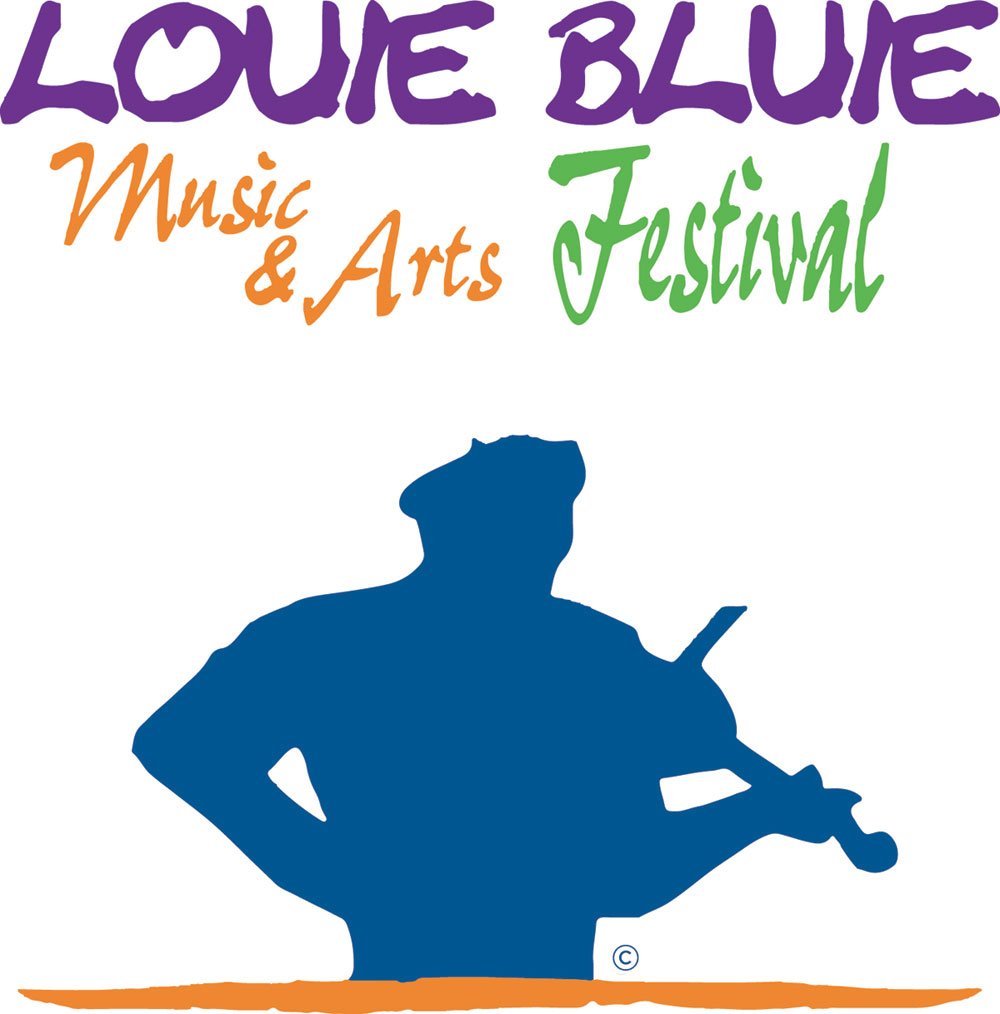Howard “Louie Bluie” Armstrong
The Louie Bluie Music and Arts Festival is named in honor of Howard “Louie Bluie” Armstrong (1909 - 2003) who grew up in Campbell County, influenced by the many genres of music common to the area, and became one of the nation's finest black string-‐band musicians, a recipient of NEA’s National Heritage Fellowship, and the Tennessee Governor's Folk Heritage Award. “Louie Bluie” was an accomplished musician, painter, and storyteller, who created ethnic jewelry, mastered seven foreign languages and 22 musical instruments, and traveled the world.
Although his father was steadily employed as an iron furnace worker in LaFollette, Howard's childhood was marked by poverty. Urged by an innate sense of art, by the age of seven Howard was fashioning paint brushes from cat hair (plucked from the tails of unsuspecting cats) and paints made from berries and crepe paper fished out of trash bins, while teaching himself to paint. Ambidextrous, he was quite capable of drawing simultaneously with both hands. He loved bright colors, used them generously in paintings -‐ later in his personal style of dress -‐ all his life.
By the age of nine, he was competent with a fiddle his father fashioned from a cast off box, plus mandolin and guitar. By the age of ten, Howard had formed a family string band with his five younger brothers. They played for money on the streets of LaFollette and in remote coal camps on the nearby mountains -‐ money Howard always brought home to his mother to help pay for their home.
It was on the streets of LaFollette that Howard first observed a sign painter in a store window and realized a good painter could get paid! It was as a boyhood friend of a local Italian family that Howard mastered his first foreign language. Although a good student, he left school and home at the age of 12 to join the family of fiddler Blind Martin Roland in Knoxville, mixing and mingling with a wealth of black and white performers on the famed Vine Street of downtown. Here in his early manhood Howard and his band were first recorded at the St. James Hotel on Gay Street. These rare recordings survived, proof of the proficiency and potential of the young black man from LaFollette, who still mailed money home to his mother.
Later, he and his musical partners drifted to Chicago. There, in the heart of the Great Depression, Howard developed what he called "skiffeling" -‐ earning a living by knocking on doors in ethnic neighborhoods where homesick immigrants would hear them sing songs from their homelands -‐ in their native tongues! Overwhelmed by emotion, they would generously "drop chips in the hat."
In this period of his life, he acquired the stage name "Louie Bluie" and became proficient in six more foreign languages including a difficult Chinese dialect; and became a master of 22 stringed instruments. A natural storyteller, he incorporated accounts of life in east Tennessee into his performances. He embraced a wide array of music from gospel/sacred to Hawaiian.
He often said of that period that when the music didn't pay, his art did -- many a painting sold on the street to any who could pay. Along the way, he also became adept at fashioning colorful beaded necklaces and jewelry, which he wore or gave to friends. His signature pieces of clothing were a beret and a colorful shirt. He was a true Renaissance man -‐ unflappable, artistic, multi-‐talented, entertaining, intelligent, well-‐traveled. After WWII, string band style faded from mainstream. Howard put away his fiddle and mandolin, settled into ordinary life with a job on the mundane assembly lines of Detroit's Chrysler auto factory. But in the l970s, folk music revived and with it string band music. Howard and his band reunited and hit the road. In his senior years, buoyed by a relationship with Barbara Ward, a performer and artist from Boston whom he later married, Howard's career soared to new popularity. He garnered multiple lifetime achievement awards, and continued to perform until his death at age 94.
Armstrong’s life was connected to the world in many ways. He played Carnegie Hall, painted political signs for Estes Kefauver, occupied a Civil Service position in Hawaii during the attack on Pearl Harbor, toured South America on a U.S. State Department funded project, recorded and performed with many of the first generation Chicago Blues greats, served as a consultant on the film “The Color Purple,” became immortalized by comic book illustrator R. Crumb, and performed at two World Fairs nearly 50 years apart; Chicago 1933 and Knoxville 1982.
Armstrong’s fans span the world. Notable collectors of Armstrong’s works include Morgan Freeman, Quincy Jones and Roger Ebert.
Armstrong was part of a whole generation of African-American string-band artists who played Americana in the 1920’s and 30’s for black and white audiences alike, everything from Tin Pan Alley tunes to gospel and blues. Like “Louie Bluie” who was an accomplished musician, painter, and storyteller, the Louie Bluie Festival will showcase the arts, crafts, music, and stories of our region.
Howard and Barbara at the unveiling of the Music Mural in Knoxville's Old City.
Raw and uncut footage of Howard "Louie Bluie" Armstrong's 2000 return to Knoxville, and the dedication of the Knoxville Music History Mural on Jackson Avenue in the Old City. The historic event included local music legends Donald Brown. Sparky Rucker, Guy and Candie Carawan, Nancy Brennan Strange, and many more!
Footage courtesy of the WBIR-TV Heartland Series Archive. This historic footage preserved by TAMIS.


